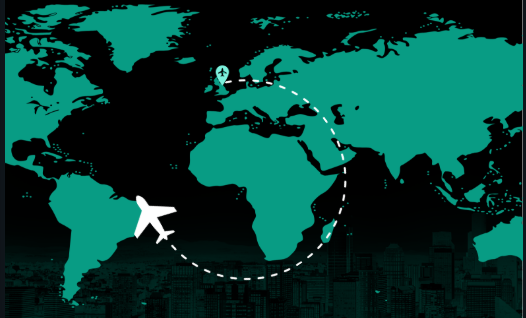5 Major International Trade Challenges in 2025: Global Trade Barriers and Supply Chain Resilience
- Shirin Nedumannil
- Aug 15
- 3 min read
The global marketplace is in a constant state of flux, but recent years have introduced a new level of complexity and disruption. For businesses engaged in international trade, staying ahead of the curve is no longer just an advantage; it's a necessity for survival. As we look towards 2025, several significant international trade challenges are shaping the landscape. From volatile geopolitical tensions to the increasing pressure for supply chain resilience, understanding these hurdles is the first step toward overcoming them. This post will explore five of the most pressing challenges and how businesses can begin to navigate this new normal.

1. The Urgent Need for Supply Chain Resilience
The COVID-19 pandemic exposed the fragility of global supply chains, and the lessons learned are more relevant than ever. In 2025, building supply chain resilience is a top priority for businesses. This means moving beyond the "just-in-time" model and developing more robust strategies that can withstand shocks. Companies are increasingly looking to diversify their supplier base, reducing their reliance on a single country or region. This might involve "friend-shoring" (sourcing from allied countries) or "near-shoring" (moving production closer to home). The goal is to create a more agile and adaptable supply chain that can quickly pivot in the face of disruptions, whether they are geopolitical, environmental, or economic.
2. Geopolitical Instability and Rising Protectionism
One of the most significant global trade barriers today is the rise of geopolitical instability with various ongoing geopolitical conflicts causing to disrupt key trade routes.We are also seeing a move towards protectionism, with nations implementing tariffs and other restrictive measures to favour domestic industries. For instance, the United States has introduced sweeping tariff increases in 2025, affecting major trading partners and causing ripple effects across global markets. This creates a challenging environment for businesses, who must now contend with a complex web of regulations and the constant threat of new tariffs that can impact profitability and disrupt established supply chains.
3. The Digital Transformation of Trade
Technology offers incredible opportunities for streamlining international trade, from AI-powered logistics to blockchain for secure transactions. However, this digital transformation also presents its own set of challenges. The increasing reliance on digital systems makes cybersecurity a critical concern. A breach in a company's supply chain can have devastating consequences, leading to data theft, operational disruptions, and reputational damage. Furthermore, the digital marketplace is becoming increasingly concentrated, with a few tech giants dominating key sectors. This can create an uneven playing field and make it difficult for smaller businesses to compete.
4. The Growing Importance of ESG Compliance
Environmental, Social, and Governance (ESG) considerations are no longer a niche concern. Today, they are a core component of international trade. Consumers, investors, and governments are all demanding greater transparency and accountability from businesses. This means companies must now navigate a complex landscape of ESG regulations, from carbon border taxes to rules aimed at preventing deforestation. While these regulations are crucial for building a more sustainable and ethical global economy, they also add another layer of complexity to international trade. Businesses must now invest in tracking and reporting their ESG performance, which can be a significant undertaking, especially for smaller companies.
5. The Talent Gap in a Complex World
Finally, as international trade becomes more complex, the demand for skilled professionals is higher than ever. From navigating intricate customs regulations to managing sophisticated digital supply chains, the skills required to succeed in global trade are constantly evolving. Unfortunately, there is a growing talent gap, with many companies struggling to find qualified individuals. This skills shortage can be a major impediment to growth, making it difficult for businesses to adapt to the changing trade landscape. Addressing this challenge will require a concerted effort from businesses, governments, and educational institutions to invest in training and development and build the workforce of the future.
In conclusion, the world of international trade is facing a perfect storm of challenges. However, for those who are willing to adapt and innovate, there are also significant opportunities. By focusing on building supply chain resilience, embracing digital transformation, prioritizing ESG compliance, and investing in talent, businesses can not only survive but thrive in this new era of global trade.




Comments